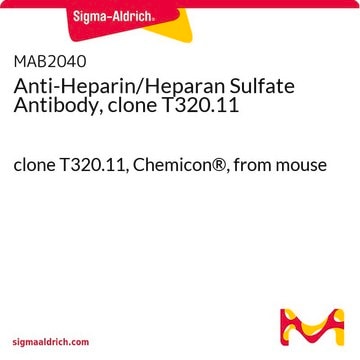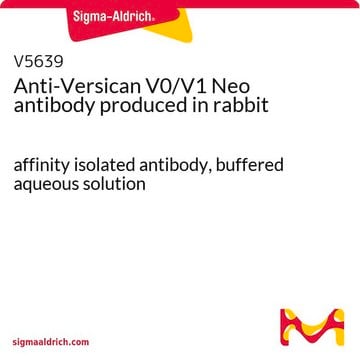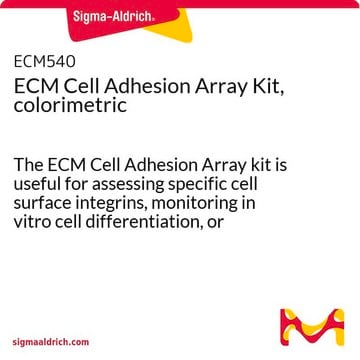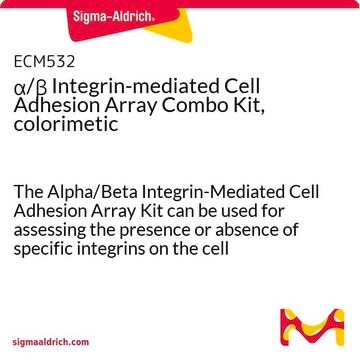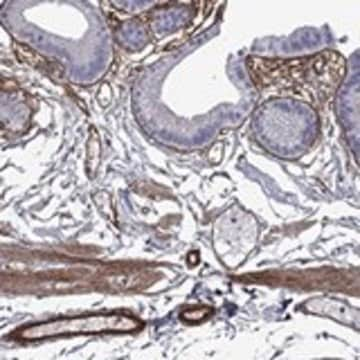MABT12
Anti-Heparan Sulfate Proteoglycan (Perlecan) Antibody, clone 5D7-2E4
clone 5D7-2E4, from mouse
Sinónimos:
heparan sulfate proteoglycan 2 (domain V region), perlecan proteoglycan, basement membrane-specific heparan sulfate proteoglycan core protein, HSPG, PLC
About This Item
Productos recomendados
origen biológico
mouse
Nivel de calidad
forma del anticuerpo
purified immunoglobulin
tipo de anticuerpo
primary antibodies
clon
5D7-2E4, monoclonal
reactividad de especies
human
técnicas
immunocytochemistry: suitable
immunohistochemistry: suitable
western blot: suitable
isotipo
IgG1κ
Nº de acceso NCBI
Nº de acceso UniProt
Condiciones de envío
wet ice
modificación del objetivo postraduccional
unmodified
Información sobre el gen
human ... HSPG2(3339)
Descripción general
Inmunógeno
Aplicación
Western Blot Analysis: A previous lot was used by an independent laboratory on a 3-8% Tris-acetate gel in which the band appears above the 460 kDa marker. (courtesy of Whitelock, J. Graduate School of Biomedical Engineering, University of New South Wales, Sydney, Australia)
Cell Structure
ECM Proteins
Calidad
Immunohistochemistry Analysis: 1:300 dilution of the antibody detected Perlecan in fresh-frozen normal human tonsil tissue.
Descripción de destino
Forma física
Almacenamiento y estabilidad
Nota de análisis
Fresh-frozen normal human tonsil tissue
Otras notas
Cláusula de descargo de responsabilidad
Not finding the right product?
Try our Herramienta de selección de productos.
Código de clase de almacenamiento
12 - Non Combustible Liquids
Clase de riesgo para el agua (WGK)
WGK 1
Punto de inflamabilidad (°F)
Not applicable
Punto de inflamabilidad (°C)
Not applicable
Certificados de análisis (COA)
Busque Certificados de análisis (COA) introduciendo el número de lote del producto. Los números de lote se encuentran en la etiqueta del producto después de las palabras «Lot» o «Batch»
¿Ya tiene este producto?
Encuentre la documentación para los productos que ha comprado recientemente en la Biblioteca de documentos.
Nuestro equipo de científicos tiene experiencia en todas las áreas de investigación: Ciencias de la vida, Ciencia de los materiales, Síntesis química, Cromatografía, Analítica y muchas otras.
Póngase en contacto con el Servicio técnico

